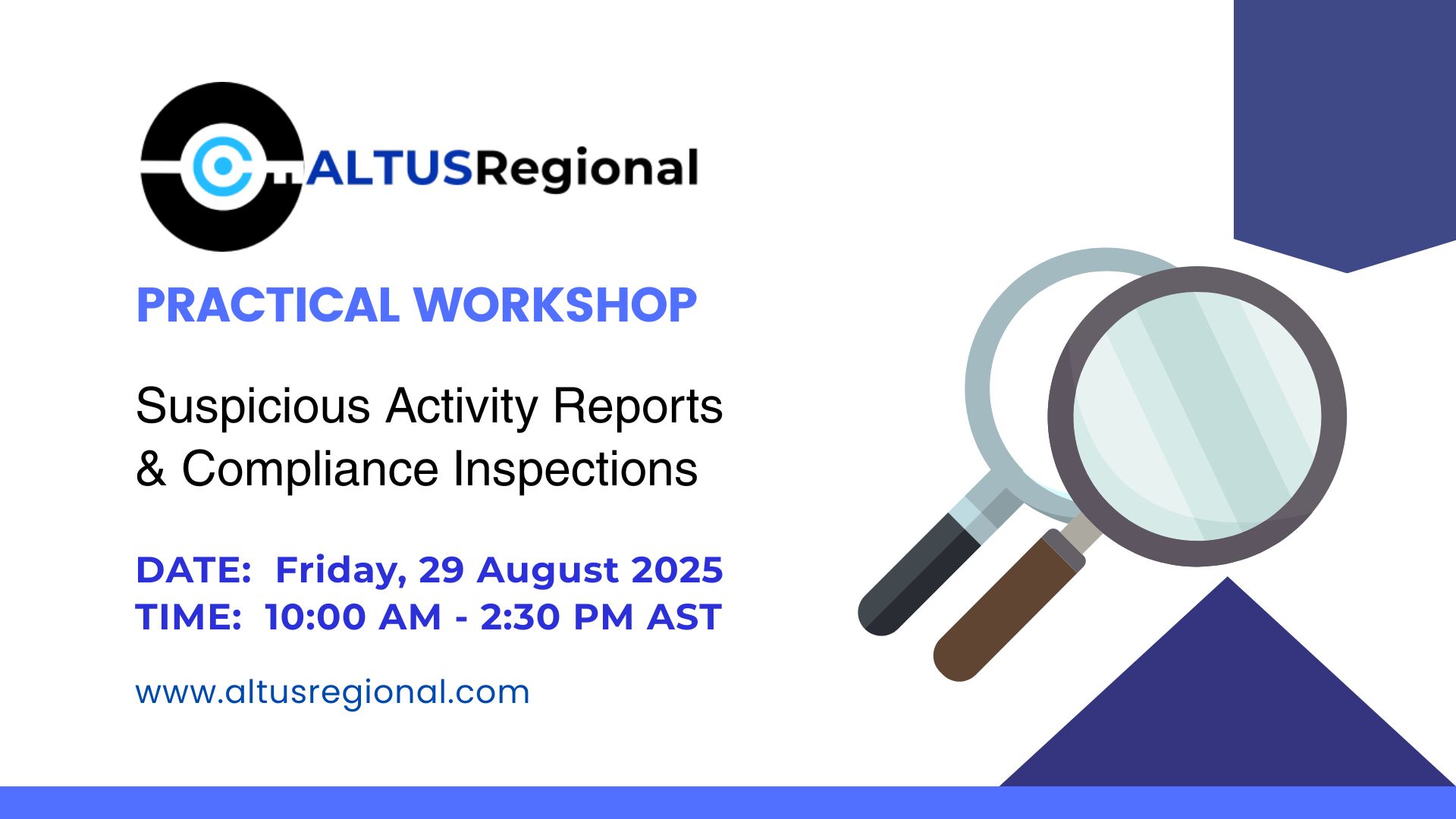The Compliance Template Trap
- August 24, 2025
- Posted by: Altus Regional Team
- Category: General
As jurisdictions across the Caribbean prepare for the next round of mutual evaluations, the pressure to demonstrate risk-based compliance is intensifying. In the evolving landscape of AML/CFT regulation, the risk-based approach is no longer a theoretical ideal. Rather, it is a practical necessity. FATF Recommendation 1 requires institutions to identify, assess, and understand their exposure to money laundering, terrorist financing, and proliferation financing risks. This foundational principle demands introspection, proportionality, and strategic clarity. Yet across the Caribbean, many institutions, particularly DNFBPs and smaller financial entities, continue to rely on generic compliance templates that undermine these very goals. These templates, often borrowed from unrelated sectors or downloaded from online repositories, impose procedures that bear little resemblance to the institution’s actual business model, client base, or transactional footprint. The result is misalignment where institutions claim to follow procedures they do not implement, and regulators increasingly assess them against those very claims. In this context, a compliance template is operationally inadequate and signals a lack of institutional self-awareness, thereby exposing firms to findings of non-compliance during inspections. More critically, use of templates erodes the credibility of the compliance function itself, reducing it to a performative exercise rather than a strategic safeguard.
Templates offer structure, language, and the illusion of readiness. But in the context of AML/CFT, they often impose procedures that bear no resemblance to the institution’s actual risk exposure.
As Julia Shamini Chase noted during AltusRegional’s recent workshop:
“You cannot then use a template that is imposing procedures and processes that are not even your own.”
This misalignment creates two immediate risks:
-
Operational Blindness — Institutions fail to identify and mitigate their true vulnerabilities.
-
Regulatory Exposure — During inspections, regulators assess institutions against their own stated procedures. If those procedures are unrealistic or unimplemented, non-compliance is inevitable.
Risk-Based Means Risk-Aligned
FATF Recommendation 1 requires institutions to “identify, assess, and understand” their ML/TF risks. This is not a theoretical exercise. It demands:
-
An Institutional Risk Assessment (IRA) that reflects the entity’s services, clientele, and transaction types.
-
A Customer Risk Assessment (CRA) that informs onboarding, due diligence, and ongoing monitoring.
-
Controls and procedures that are proportionate to the institution’s actual risk profile.
Templates rarely deliver this. They often reflect the risk profile of a different sector, for example, a TCSP manual repurposed for a jeweler or law firm. leading to procedural mismatches and compliance gaps.
The risk-based approach, when properly implemented, transforms compliance from a static obligation into a dynamic governance tool. It begins with an Institutional Risk Assessment (IRA) that reflects the entity’s services, clientele, delivery channels, and geographic exposure. This assessment must be more than a checklist. Instead, it must be a living document that informs every aspect of the institution’s compliance infrastructure. From onboarding protocols to transaction monitoring systems, each control must be proportionate to the risks identified. For example, a jeweler with high-value, cash-intensive transactions may require enhanced due diligence and ongoing monitoring, while a small law firm with limited international exposure may adopt simplified measures.
The key is proportionality, NOT uniformity. – Natalie O. Sandiford
FATF’s interpretive notes explicitly allow for simplified measures in low-risk scenarios, but they also expect stronger safeguards where risks are higher. Institutions that rely on templates often miss this nuance. They either over-engineer controls that are irrelevant to their operations or under-protect areas of genuine vulnerability. In both cases, the disconnect between stated procedures and actual practice becomes a focal point during regulatory inspections. And as jurisdictions move toward effectiveness-based assessments, this disconnect may be considered a failure of governance.
The Inspection Lens Has Shifted
Regulators are no longer satisfied with surface-level documentation. They now ask:
-
Do your procedures comply with the law?
-
Are you consistently applying them in practice?
-
Do they reflect your actual business model and risk exposure?
Institutions that rely on templates often fail the second and third tests, resulting in findings of non-compliance, reputational damage, and in some cases, regulatory sanctions.
Avoiding the Compliance Template Trap
One of the more subtle consequences of relying on generic compliance templates is the gradual disconnect it can create within institutional culture. When procedures are adopted without being grounded in the institution’s actual risk profile, staff may begin to view AML/CFT obligations as externally imposed requirements rather than integral components of their operational responsibilities. This can lead to a compliance environment where procedures are followed mechanically, without a clear understanding of their purpose or relevance. In sectors where frontline staff are instrumental in identifying and escalating suspicious activity, this lack of engagement can weaken the effectiveness of the entire risk management framework.
Without a tailored framework that reflects the institution’s actual risk exposure, training becomes generic, monitoring becomes mechanical, and reporting becomes inconsistent. Worse still, institutions lose the ability to defend their decisions. When regulators ask why certain controls were adopted, or why others were omitted, template-driven entities struggle to respond. They cannot demonstrate that their measures are risk-informed, proportionate, or strategically aligned. In contrast, institutions that build their compliance frameworks from the ground up, anchored in their own Institutional Risk Assessment (IRA) and Customer Risk Assessment (CRA) can articulate their rationale, adjust their controls as risks evolve, and demonstrate a culture of compliance that goes beyond documentation. This is the essence of FATF Recommendation 1: not just to comply, but to align.
Contribute an Article to our Blog
Past Events
Compliance Excellence in the Caribbean Webinar
-
January 30, 2025
-
11:46 am to 11:46 am
-
ONLINE
Implementing a Risk-Based Approach Workshop
-
June 27, 2025
-
One Day Workshop
-
ONLINE
- 1
- 2
Upcoming Events
Compliance Excellence in the Caribbean Webinar
-
January 30, 2025
-
11:46 am to 11:46 am
-
ONLINE
Implementing a Risk-Based Approach Workshop
-
June 27, 2025
-
One Day Workshop
-
ONLINE
SARs and Compliance Inspections Workshop
-
August 29, 2025
-
One Day Workshop
-
ONLINE
Sanctions Compliance Excellence in the Caribbean- Webinar
-
November 28, 2025
-
11:46 am to 11:46 am
-
ONLINE




